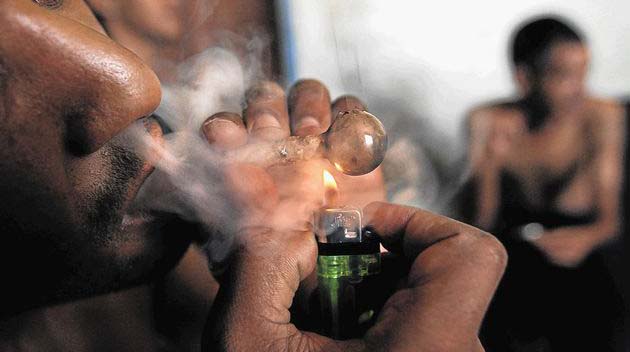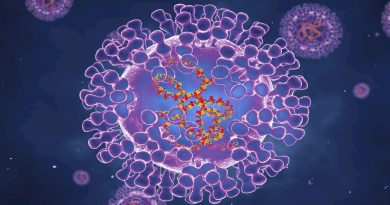Bulawayo’s risky rise of alcohol, drug enemas …Isipeyiti trend shocks medics as drug users seek new highs
WHEN Dr Christopher Dube (name changed), a local medical professional, tested the Blood Alcohol Level (BAL) of a recently admitted patient, he was shocked to see it hover near 0,40 grammes per 100 millilitres of blood.
At that level, a person is likely to be suffering from alcohol poisoning, a potentially life-threatening condition that can cause loss of consciousness, coma or even death from respiratory arrest.
On this occasion, however, what shocked Dr Dube was not the patient’s BAL. With drug and substance abuse running rampant in Zimbabwe, the sight of young men and women being wheeled into hospital wards in a stupor is no longer rare.
What surprised Dr Dube was the account given by the patient’s friends, who swore that he had only consumed a few glasses of alcohol.
It was only upon further probing that Dr Dube got closer to the truth. This particular patient had not ingested alcohol through the normal route — the mouth — but had instead squirted it into his system through his anus via an enema, a method known as isipeyiti in colloquial language.
“It was the first time I had come across a patient who had taken alcohol in this manner,” the medical professional told Sunday Life.
“It was only after further consultation with other doctors from around the country that I found out that the practice is quite widespread.”
In general, one’s liver can process about one alcohol-containing drink per hour. One drink is typically defined as about 354ml of beer, 174ml of wine or 44ml of liquor.
However, different beers and wines contain different percentages of alcohol. The concentration of alcohol in one’s blood is determined by how quickly one consumes the alcohol.
The patient that Dr Dube attended to might not have taken copious amounts of alcohol, but they had consumed it through boofing or an alcohol enema, a method fast gaining favour among young people abusing illicit substances on the streets of Bulawayo.
Using an alcohol enema involves placing a small tube into someone’s rectum and pouring alcohol into the colon. Because the alcohol is absorbed directly into the bloodstream, the recipient gets drunk faster.
Gastroenterologist Dr Preston Stewart revealed that while stomachs and livers have an enzyme known as alcohol dehydrogenase that breaks down ethanol to make it less toxic for the body, the lower gastrointestinal tract does not possess it.
Therefore, alcohol molecules are absorbed directly into the bloodstream through the lining of the colon.
While the alcohol eventually makes its way up to the liver, the high level of alcohol content suddenly released into it has the potential to completely overwhelm the organ.
Boofing methods vary, ranging from the use of alcohol-soaked tampons to makeshift beer bongs or modified enema kits.
In addition to the risk of alcohol poisoning, these methods pose serious risks such as anal injuries, dehydration and electrolyte imbalances.
Besides the quick high that can be attained from the use of this method, users believe that it reduces hangovers and prevents alcohol-induced actions such as vomiting.
While medical professionals are concerned about blood alcohol levels shooting up due to the use of enemas, alcohol is not the only harmful substance now being taken this way in some of the country’s major drug hotspots.
Other drugs, such as cocaine and crystal methamphetamine, popularly known as mutoriro, are also being abused through rectal administration.
Health experts say some cocaine users have turned to inserting the drug rectally to experience a faster and more intense high. The effects are felt almost immediately, often within a minute or two and can last for several hours.
Those battling cocaine addiction may use this method to satisfy cravings quickly, while others resort to it to avoid visible track marks that would mark them out as abusers of illicit substances.
Users of mutoriro are said to give the same reason. Others resort to this method because they are unable to snort the drug for medical reasons.
“It is an effective method for people who do not want to be caught because other methods give you away,” said one school-going pupil who spoke to Sunday Life anonymously on the sidelines of the recently held Zimpapers Drug and Substance Abuse Indaba in Bulawayo.
“Injection marks on the arm are visible and smoking brings a smell that you just cannot wash away easily. This is why a lot of people at school are using this method, because they know they cannot be detected by parents who now know what to look out for.”
While the speed and strength of the high are the ultimate goals, the type of high one gets is also sought after by users.
Some report that the high from boofing is concentrated more in the torso and limbs rather than producing the typical head rush associated with snorting.
Some describe an increase in sexual arousal, a welcome side effect for those who want to “kill two birds with one stone.” Others, however, say the experience is painful or deeply uncomfortable.
Ingutsheni Hospital clinic director Dr Wellington Ranga said while boofing was a relatively new concept in Bulawayo, it would not be a surprise if it suddenly became the rage because some took these new methods of drug consumption as a fashion of sorts.
“I think it would not be a surprise if we started having more cases related to this method because one thing that usually defines why people gravitate to taking these substances is the nature of it being wrong. People want to try these things because they are not approved of and looked down upon by society and people in authority. There is no particular logic to it,” he said.
“The methods of drug consumption are some sort of fashion and they are just bound to follow. It is the same reason why you will see a lot of young men at a particular time starting to put on nose rings.
“It is the fashion of the day to them and that goes for drug users. If you told them that people are now mixing their drugs with porridge, they would just start doing that. So, we have to fight against the use of drugs, not necessarily the methods people are using to get their high,” he explained. _*ZimPapers*_*Bulawayo’s risky rise of alcohol, drug enemas …Isipeyiti trend shocks medics as drug users seek new highs*
https://chat.whatsapp.com/Cck3jv3a10D7Z4wQWEJ1dx?mode=wwc…
WHEN Dr Christopher Dube (name changed), a local medical professional, tested the Blood Alcohol Level (BAL) of a recently admitted patient, he was shocked to see it hover near 0,40 grammes per 100 millilitres of blood.
At that level, a person is likely to be suffering from alcohol poisoning, a potentially life-threatening condition that can cause loss of consciousness, coma or even death from respiratory arrest.
On this occasion, however, what shocked Dr Dube was not the patient’s BAL. With drug and substance abuse running rampant in Zimbabwe, the sight of young men and women being wheeled into hospital wards in a stupor is no longer rare.
What surprised Dr Dube was the account given by the patient’s friends, who swore that he had only consumed a few glasses of alcohol.
It was only upon further probing that Dr Dube got closer to the truth. This particular patient had not ingested alcohol through the normal route — the mouth — but had instead squirted it into his system through his anus via an enema, a method known as isipeyiti in colloquial language.
“It was the first time I had come across a patient who had taken alcohol in this manner,” the medical professional told Sunday Life.
“It was only after further consultation with other doctors from around the country that I found out that the practice is quite widespread.”
In general, one’s liver can process about one alcohol-containing drink per hour. One drink is typically defined as about 354ml of beer, 174ml of wine or 44ml of liquor.
However, different beers and wines contain different percentages of alcohol. The concentration of alcohol in one’s blood is determined by how quickly one consumes the alcohol.
The patient that Dr Dube attended to might not have taken copious amounts of alcohol, but they had consumed it through boofing or an alcohol enema, a method fast gaining favour among young people abusing illicit substances on the streets of Bulawayo.
Using an alcohol enema involves placing a small tube into someone’s rectum and pouring alcohol into the colon. Because the alcohol is absorbed directly into the bloodstream, the recipient gets drunk faster.
Gastroenterologist Dr Preston Stewart revealed that while stomachs and livers have an enzyme known as alcohol dehydrogenase that breaks down ethanol to make it less toxic for the body, the lower gastrointestinal tract does not possess it.
Therefore, alcohol molecules are absorbed directly into the bloodstream through the lining of the colon.
While the alcohol eventually makes its way up to the liver, the high level of alcohol content suddenly released into it has the potential to completely overwhelm the organ.
Boofing methods vary, ranging from the use of alcohol-soaked tampons to makeshift beer bongs or modified enema kits.
In addition to the risk of alcohol poisoning, these methods pose serious risks such as anal injuries, dehydration and electrolyte imbalances.
Besides the quick high that can be attained from the use of this method, users believe that it reduces hangovers and prevents alcohol-induced actions such as vomiting.
While medical professionals are concerned about blood alcohol levels shooting up due to the use of enemas, alcohol is not the only harmful substance now being taken this way in some of the country’s major drug hotspots.
Other drugs, such as cocaine and crystal methamphetamine, popularly known as mutoriro, are also being abused through rectal administration.
Health experts say some cocaine users have turned to inserting the drug rectally to experience a faster and more intense high. The effects are felt almost immediately, often within a minute or two and can last for several hours.
Those battling cocaine addiction may use this method to satisfy cravings quickly, while others resort to it to avoid visible track marks that would mark them out as abusers of illicit substances.
Users of mutoriro are said to give the same reason. Others resort to this method because they are unable to snort the drug for medical reasons.
“It is an effective method for people who do not want to be caught because other methods give you away,” said one school-going pupil who spoke to Sunday Life anonymously on the sidelines of the recently held Zimpapers Drug and Substance Abuse Indaba in Bulawayo.
“Injection marks on the arm are visible and smoking brings a smell that you just cannot wash away easily. This is why a lot of people at school are using this method, because they know they cannot be detected by parents who now know what to look out for.”
While the speed and strength of the high are the ultimate goals, the type of high one gets is also sought after by users.
Some report that the high from boofing is concentrated more in the torso and limbs rather than producing the typical head rush associated with snorting.
Some describe an increase in sexual arousal, a welcome side effect for those who want to “kill two birds with one stone.” Others, however, say the experience is painful or deeply uncomfortable.
Ingutsheni Hospital clinic director Dr Wellington Ranga said while boofing was a relatively new concept in Bulawayo, it would not be a surprise if it suddenly became the rage because some took these new methods of drug consumption as a fashion of sorts.
“I think it would not be a surprise if we started having more cases related to this method because one thing that usually defines why people gravitate to taking these substances is the nature of it being wrong. People want to try these things because they are not approved of and looked down upon by society and people in authority. There is no particular logic to it,” he said.
“The methods of drug consumption are some sort of fashion and they are just bound to follow. It is the same reason why you will see a lot of young men at a particular time starting to put on nose rings.
“It is the fashion of the day to them and that goes for drug users. If you told them that people are now mixing their drugs with porridge, they would just start doing that. So, we have to fight against the use of drugs, not necessarily the methods people are using to get their high,” he explained. _*ZimPapers*_




